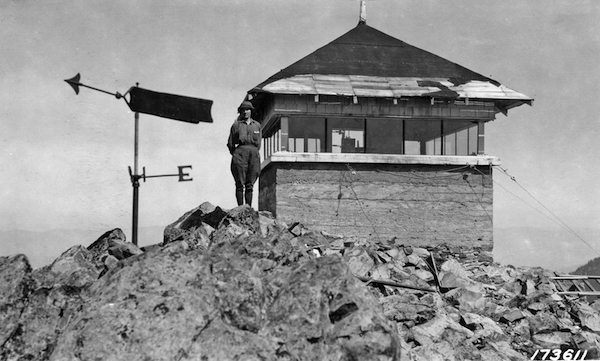written by Kevin Max
Brian Druker runs up the steep approach of Marquam Hill to OHSU nearly every morning from his home in southwest Portland. For many Oregonians, this feat alone would be a daunting task. For the 54-year-old doctor, whose fringe approach to leukemia research is now the center of the search for a cure, running is the transportation mode that keeps his brain most active.
Dr. Druker, now the director of the Knight Cancer Institute at Oregon Health Sciences University, left Harvard University, where he was an instructor and researcher, for Portland in 1993. At OHSU, Druker revolutionized cancer treatment with his targeted therapy encapsulated in $3-billion-a-year Gleevec, which all but cured chronic myeloid leukemia and threw open the doors to developing new therapies for other types of cancer.
With a generous gift of $100 million from Nike’s Phil and Penny Knight in October 2008, Druker’s aim now is to recruit the top researchers to OHSU, to discover more targeted treatments for cancer, to create a biotech infrastructure to test and commercialize billion-dollar drugs and to put Oregon at the center of the cure.
1859’s editor, Kevin Max, caught up with Dr. Druker to talk about these implications for cancer patients and for Oregon.
1859: Did you always know you had a vocation for medicine?
It’s one of those areas where I thought I’d end up, if I were really honest with myself. There was a lot of pressure in my family for someone to end up in medicine. I was the youngest of four, and none of the other siblings went into medicine.
1859: What brought you to OHSU?
There were several factors. With recruiting, there’s the push and the pull. The push was that at Harvard, the administration didn’t believe in the approach I was taking, so there wasn’t much of a future for me there. I started looking for a place with a commitment to cancer research and a great place to live. Grover Bagby, then the director of OHSU’s nascent Cancer Institute, believed in what I was doing.
1859: Tell me about the life of Gleevec since it came out commercially in 2001. What has changed?
The most important aspect is that patients with this kind of leukemia had a three- to five-year life expectancy. Gleevec took a disease that was fatal and now 95% of patients taking Gleevec are alive and well at five years. The average life expectancy of these patients is 30 years. The most important thing about this is that it has saved hundreds of thousands of lives and completely transformed the way we think about cancer. Cancer treatment centers used to treat everything with various different kinds of painful chemotherapy. After Gleevec, everything they have in their arsenal is a targeted therapy. It has completely changed the way that every major drug company thinks about cancer.
1859: What does the $100 million Knight gift do for OHSU?
This will transform our ability to care for cancer patients in Oregon and transform our research capabilities. The reality is that a breakthrough like Gleevec has a global impact and can save hundreds of thousands of lives. Our goal is to create an environment where these types of breakthroughs become commonplace.
1859: You have a wish list of your own. What else would you consider crucial but yet absent in the formation of a top cancer institute?
We still need more people, and over the next five to 10 years, you’ll see an influx of talent into Oregon because of the Knight gift. But, I view the Knight gift as a beginning not an end. We will still need more funding to accomplish our goals, and as people see our progress, I am certain that they will want to be part of our winning team.
What I’d also like to see is the biotech industry growing in parallel with the Knight Institute to help us develop and commercialize our research.
1859: What are you currently working on?
Our own research is focused on three areas. A small percentage of patients have become resistant to Gleevec, and we’re working on developing new treatments for those patients. Also, Gleevec is able to control leukemia as long as people stay on this therapy but unable to eradicate it outright. We’re thinking about whether there is something we can add to Gleevec to make it a true cure. Lastly, it took 25 years to identify the target for Gleevec. We now have the ability to identify new targets in other leukemias in two to three months. If you can identify a target, it allows you to develop a drug like Gleevec to alleviate and eradicate it.
Gleevec is a $3-billion-a-year-drug. Imagine what we could do identifying molecular targets in two to three months, then developing drugs like Gleevec to target these abnormalities, and what 20 drugs like Gleevec would mean for Oregon.
1859: You’re also working in some role with Portland venture capitalist John Hull in his new early-stage fund, Marquam Hill Capital. What is the goal of that fund?
We have an opportunity to do something that’s unique. Typically, biotech companies license ideas or technologies from universities for commercialization, but there is very little interaction between the company and the university.Imagine instead if you established a set of companies that collaborated closely with our cancer institute, working on projects that would assist the cancer institute with the commercialization process. As an example, if our lab identifies a new target for cancer therapy, the biotech company would then develop a drug that my lab could test and our cancer institute would run the initial clinical trials.
Drug discovery and clinical trials require tens of millions of dollars. No university can fund that. That’s best done by private industry, but we can partner with industry to make this happen more quickly, efficiently and economically.
1859: Your gift lies in research. Why not spend all your time in lab?
The way that I view it is the way former OHSU president Peter Kohler used to introduce me: “This is Brian Druker, and he discovered Gleevec, and we think he’s got another Gleevec in him.” My mission is to recruit other scientists and give them the resources and support to revolutionize cancer treatments. If we’re set up with the right infrastructure, there could be 20 Gleevecs coming out of OHSU, not just one. That’s real leveraging.









